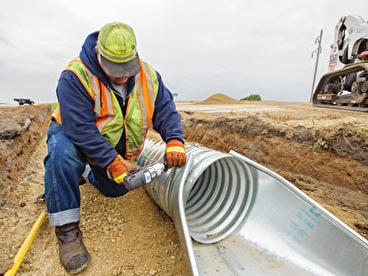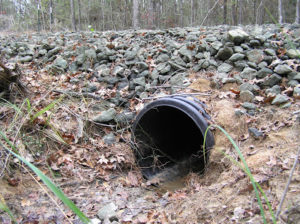Safe and Efficient Tree Removal Services
Safe and Efficient Tree Removal Services
Blog Article
Culvert Setup Facilitated: Step-by-Step Guide for Success
From picking the proper culvert size to integrating appropriate drainage procedures, each step in the setup process plays an important role in the capability and long life of the culvert system. Stay tuned to uncover the vital steps and factors to consider that can make culvert installation a smooth and successful endeavor.
Picking the Right Culvert Dimension
Choosing the ideal culvert dimension is crucial for guaranteeing effective water flow and architectural stability in culvert installment projects - Pad Construction. The size of the culvert directly influences the circulation ability of water through the structure. A culvert that is as well small can result in flooding and overflow, while one that is as well big may result in lowered water speed, possibly causing debris buildup and blockages
To determine the appropriate culvert dimension, variables such as the watershed area, optimal flow rates, and hydraulic effectiveness need to be meticulously taken into consideration. Computations based on these parameters help in picking a size that can effectively handle the predicted water quantity while minimizing the danger of blockages and architectural failing.
It is important to get in touch with engineering standards and standards to ensure that the chosen culvert size satisfies the task demands and local guidelines (Pad Construction). By selecting the ideal culvert size, job managers can maximize water circulation, avoid possible issues, and enhance the total efficiency and long life of the culvert setup
Preparing the Installment Site
Effective culvert setup necessitates careful preparation of the setup website to make certain optimal structural assistance and capability. Prior to starting the setup process, it is vital to get rid of the site of any particles, vegetation, or blockages that can restrain the culvert's positioning.
Moreover, it is crucial to take into consideration variables such as soil composition, groundwater levels, and ecological influences when preparing the installment site. Performing a detailed website assessment can help recognize any type of prospective difficulties or risks that might impact the culvert's efficiency. By putting in the time to prepare the installment site correctly, you can aid ensure a successful culvert setup that fulfills architectural requirements and makes sure lasting performance.
Placing the Culvert Properly

The grade at which the culvert is placed is critical for maintaining an appropriate slope for water flow. A steady slope assists stop merging and promotes effective drainage. In addition, the culvert must be oriented properly to make sure that the inlet and electrical outlet are in the proper locations. This positioning is important for the culvert to function successfully in managing water circulation.
Backfilling and Condensing the Dirt
Correct backfilling and compaction of the soil around the culvert is necessary to ensure security and protect against prospective concerns in the future. When the culvert is appropriately placed, the next essential action is to backfill the location around it with appropriate material. The backfill material must be totally free from rocks, debris, and raw material to avoid damages to the culvert. It is suggested to make use of granular product such as sand or gravel for backfilling, as it offers excellent water drainage and compaction properties.
Compaction helps in lowering the chances of settlement and ensures consistent assistance around the culvert. It is vital to small the dirt equally on all sides of the culvert to preserve its structural honesty.
Correct backfilling and compaction not only provide stability to the culvert yet also assist in preventing soil erosion and preserving the long life of the culvert system.
Ensuring Proper Drain Combination
Incorporating efficient drain services plays an important duty in the overall functionality and long life of culvert installments. Appropriate water drainage integration is essential for handling water circulation, preventing disintegration, and ensuring the architectural integrity of the culvert system. To attain this, it is important to design an extensive drain strategy that considers aspects such as the volume of water expected, the topography of the area, and the type of dirt present.

Additionally, integrating attributes like Culvert installation disintegration control actions, such as riprap or plants, can better enhance the efficiency of the drainage system. By very carefully planning and applying these drain options, culvert installations can work successfully and endure the test of time.
Final Thought
In conclusion, correct culvert setup is important for keeping efficient drain systems. By selecting the ideal culvert dimension, preparing the installation website, positioning the culvert properly, backfilling and condensing the dirt, and making certain proper drain combination, success can be accomplished. Adhering to these actions will help make certain the longevity and effectiveness of the culvert, eventually adding to the overall success of the water drainage system.
Report this page